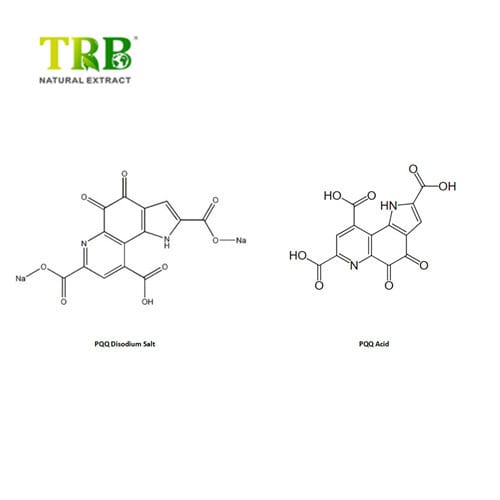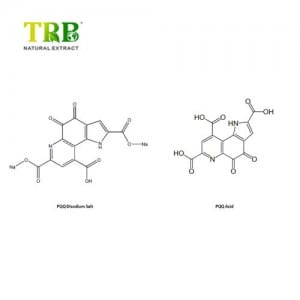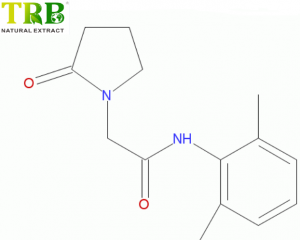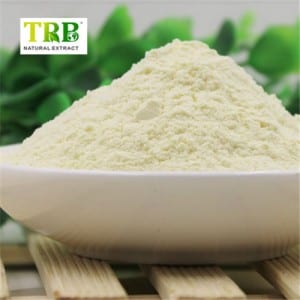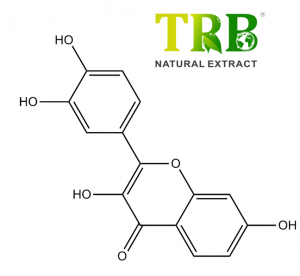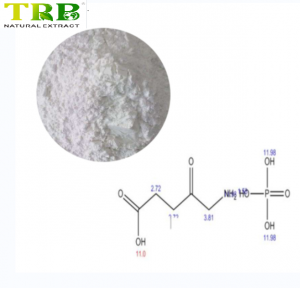Product Name:Pyrroloquinoline Quinone Disodium Salt
CAS number: 122628-50-6/ 72909-34-3
Molecular Weight: 374.17/ 330.21
Molecular Formula: C14H4N2Na2O8/ C14H6N2O8
Specification:PQQ Disodium Salt 99%;PQQ Acid 99%
Appearance: Reddish orange to Reddish Brown Fine Powder.
Application: Widely used for dietary supplement and nutraceuticals.
Storage: Stored in a relaxed and dry condition, get away from direct sun.
Pyrroloquinoline Quinone Disodium Salt (PQQ) Product Description
Product Overview
Pyrroloquinoline Quinone Disodium Salt (CAS No: 122628-50-6), commonly abbreviated as PQQ, is a stable and bioavailable form of pyrroloquinoline quinone—a redox cofactor with potent antioxidant properties. Naturally found in soil, kiwifruit, fermented foods, and human breast milk, PQQ plays a critical role in cellular energy production and mitochondrial function . Over 80% of dietary supplements utilize this sodium salt form due to its enhanced stability and solubility .
Key Benefits
- Enhances Cellular Energy: Supports mitochondrial biogenesis, improving energy metabolism and reducing fatigue .
- Cognitive Support: Protects neurons from oxidative damage, enhances memory, and mitigates age-related cognitive decline .
- Cardiovascular Health: Reduces oxidative stress and supports heart function through antioxidant mechanisms .
- Antioxidant Defense: Neutralizes free radicals and recycles antioxidants like glutathione, promoting overall cellular health .
Scientific Backing
- FDA GRAS Status: Recognized as Generally Recognized As Safe (GRAS) by the U.S. FDA for use in food and supplements .
- EFSA Approval: Evaluated for safety under EU Novel Food Regulation (EU 2015/2283), with specific usage conditions .
- Clinical Studies: Demonstrated efficacy in improving brain function, reducing oxidative stress, and enhancing mitochondrial efficiency in human trials .
Technical Specifications
| Property | Details |
|---|---|
| Molecular Formula | C₁₄H₄N₂Na₂O₈ |
| Molecular Weight | 374.17 g/mol |
| Appearance | Reddish-brown powder |
| Purity | ≥98% (HPLC) |
| Solubility | Water-soluble (3 g/L at 25°C) |
| Storage | Store in a dry, cool place (2-8°C recommended); avoid light and moisture . |
Recommended Usage
- Dosage: 10–40 mg/day for adults. Beginners should start with 10–20 mg and adjust based on response .
- Formulations: Suitable for capsules, tablets, and powdered blends. Compatible with vegan and gluten-free formulations .
Quality Assurance
- Certifications: Manufactured under HACCP and ISO standards, ensuring safety and traceability .
- Non-GMO: Produced via fermentation using non-genetically modified Hyphomicrobium denitrificans .
Regulatory Compliance
- EU Market Restrictions: Not currently authorized for sale in the EU, UK, Iceland, Liechtenstein, or Switzerland without prior approval .
- Labeling Requirements: Products must include:
- “For adults only. Not recommended for pregnant or lactating women.” .
- “Pyrroloquinoline Quinone Disodium Salt” as the designated ingredient name .
Applications
- Dietary Supplements: Energy boosters, cognitive enhancers, and anti-aging formulations.
- Functional Foods: Fortified beverages, health bars, and nutraceuticals.
- Cosmetics: Used as a skin protectant in anti-aging creams .
Why Choose Our PQQ?
- High Purity: ≥98% assay with stringent quality control .
- Global Compliance: Detailed guidance on market-specific regulations .
- Research Support: Backed by over 20 peer-reviewed studies on safety and efficacy .
Contact Us
For bulk pricing, certificates of analysis, or regulatory assistance, reach out to our sales team. We provide tailored solutions to meet your formulation needs.
Pyrroloquinoline Quinone food sources
PQQ naturally exists in most vegetable foods, fruits, and vegetables (trace), and relatively high levels of PQQ can be detected in fermented soybean products, such as kiwifruit, lychee, green beans, tofu, rapeseed, mustard, green tea (camellia), green pepper, spinach, etc.
G. Haug found that it was the third redox cofactor in bacteria after nicotinamide and flavin (although he assumed it was naphthoquinone). Anthony and Zatman also found unknown redox cofactors in ethanol dehydrogenase. In 1979, Salisbury and his colleagues as well as Duine and their colleagues extracted this pseudo base from methanol dehydrogenase of dinoflagellates and identified its molecular structure. Adachi and his colleagues found that Acetobacter also contains PQQ.
Mechanism of action of Pyrroloquinoline Quinone
Pyrroloquinoline quinone (PQQ) is a small quinone molecule, which has a redox effect, can reduce oxidant (antioxidant); it then is recovered into the active form by glutathione. It seems relatively stable because it can undergo thousands of cycles before depletion, and it is new because it is related to the protein structure of cells (some antioxidants, main carotenoids such as beta-carotene and astaxanthin, are located in specific areas of cells, where they play more antioxidant roles proportionally). Because of proximity, PQQ seems to play a role near proteins such as carotenoids on cell membranes.
These redox functions can alter protein functions and signal transduction pathways. Although there are many promising studies in vitro (outside living models), some promising results of PQQ supplementation are mainly related to altering some signal transduction pathways or their benefits to mitochondria. (Produce more and improve efficiency).
It’s a coenzyme in bacteria (so for bacteria, it’s like B-vitamins), but it doesn’t seem to extend to humans. Since this does not apply to humans, a 2003 article in Nature, a scientific journal, argues that the idea that PQ is a vitamin compound is outdated and at best considered as a “vitamin-like substance.”
Perhaps most notable is the effect of PQQ on mitochondria, which provide energy (ATP) and regulate cell metabolism. Researchers have extensively observed the impact of PPQ on mitochondria and found that PQQ can increase the number of mitochondria and even improve the efficiency of mitochondria. This is an important reason why PPQ is so useful. Enzymes containing PQQ are known as glucose dehydrogenase, a quinoa protein that is used as a glucose sensor.
Benefits of Pyrroloquinoline Quinone
Having the mitochondria at their best is so essential for a healthy life that you can experience many benefits while taking ppq. Here are some of the most noteworthy about pyrroloquinoline quinone benefits.
Increasing Cell Energy
Because mitochondria generate energy for cells, and PQQ helps mitochondria work more effectively, energy in cells increases as a whole; this is the Pyrroloquinoline Quinone mitochondrial mechanism. Unused cellular energy is diverted to other parts of the body. If your body lacks power all day, or you feel tired or drowsy, then the increased strength of PPQ is vital to you. One study found that after taking PQQ, subjects with reported energy problems had significantly lower levels of fatigue. If you are looking for something to increase your energy, PQQ may help with that.
Preventing cognitive decline
With the development of science, scientists have found that nerve growth factor (NGF) can grow and recover. At the same time, PQQ has been shown to have a positive effect on NGF and to increase nerve growth by 40 times. NGF is essential for the formation and maintenance of new neurons, and it can restore damaged neurons that may inhibit cognitive function. Neurons are cells that transmit information, so our brains can communicate between themselves and other parts of the body. Improving the quality and quantity of neurons can improve cognition. Therefore, PQQ has short-term improvement.
Supporting cardiovascular health
Pyrroloquinoline quinine provides antioxidant and mitochondrial support. Studies have shown that both PQQ and CoQ10 support myocardial function and proper cellular oxygen utilization. Pyrroloquinoline quinone prevents oxidative stress through its rejuvenation.
Other Efficacy:
Except for the three main benefits listed above, PQQ offers other less well-known benefits. PQQ may play a role in alleviating body inflammation, better your sleep and can improve fertility, but more research is needed to draw definitive conclusions. As research progresses, more benefits of taking PQQ may be discovered.
The dosage of Pyrroloquinoline Quinone
At present, no government or WHO has stipulated the pyrroloquinoline quinone dosage. However, some individuals and institutions have done many biological tests and human tests on the optimal dosage of pyrroloquinoline quinone powder. Through observing and comparing the physical performance of the subjects, it is concluded that the optimal dosage of PQQ is 20 mg-50 mg. Always refer your doctor if there are any questions pending. Such as biopqq pyrroloquinoline quinone disodium salt.
Side effects of PQQ
Since 2009, dietary supplements containing PQQ Na 2 have been commercialized in the United States after formal notification by the Food and Drug Administration (FDA), and no adverse reactions have been reported. If you want to add pyrroloquinoline quinone supplements to your diet, it’s important to remember one thing. Since it does not require too much PQQ to produce an effect, most doses are kept in a minimum range. Therefore, most people do not have to worry about any Pyrroloquinoline Quinone side effects. (That’s you bought pyrroloquinoline quinone PQQ supplement from the market)
